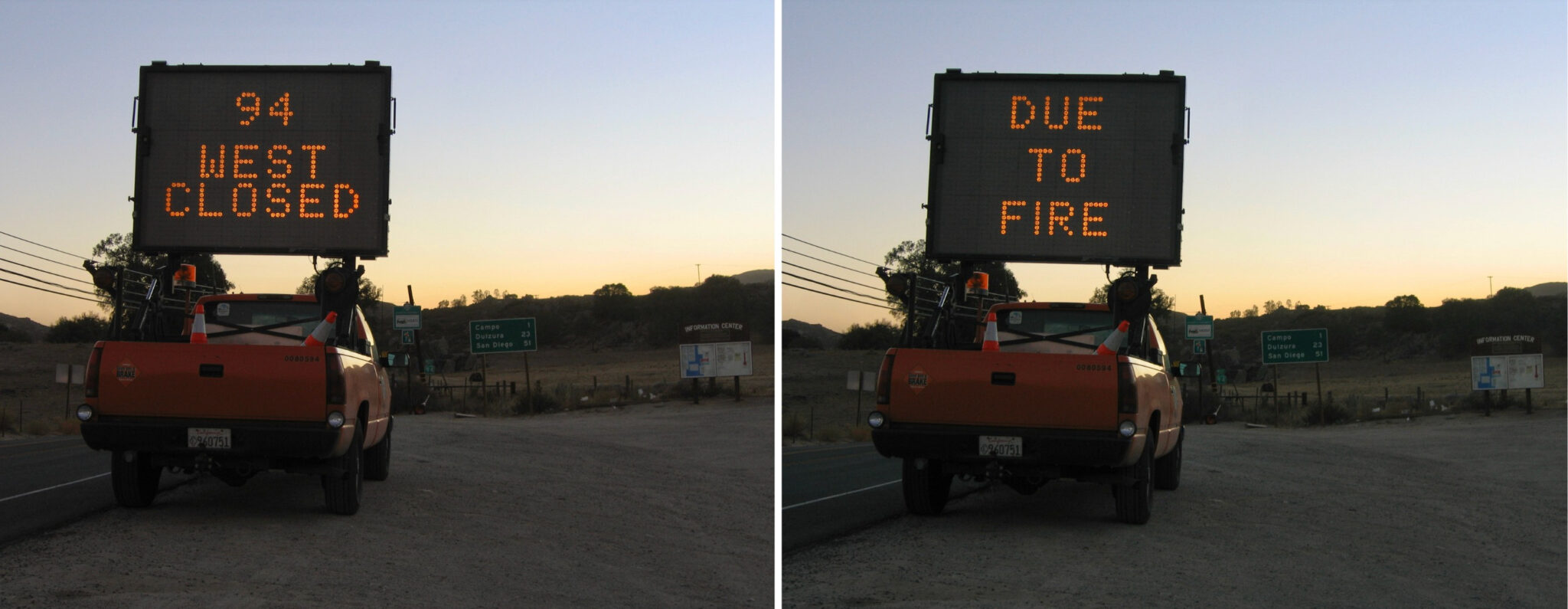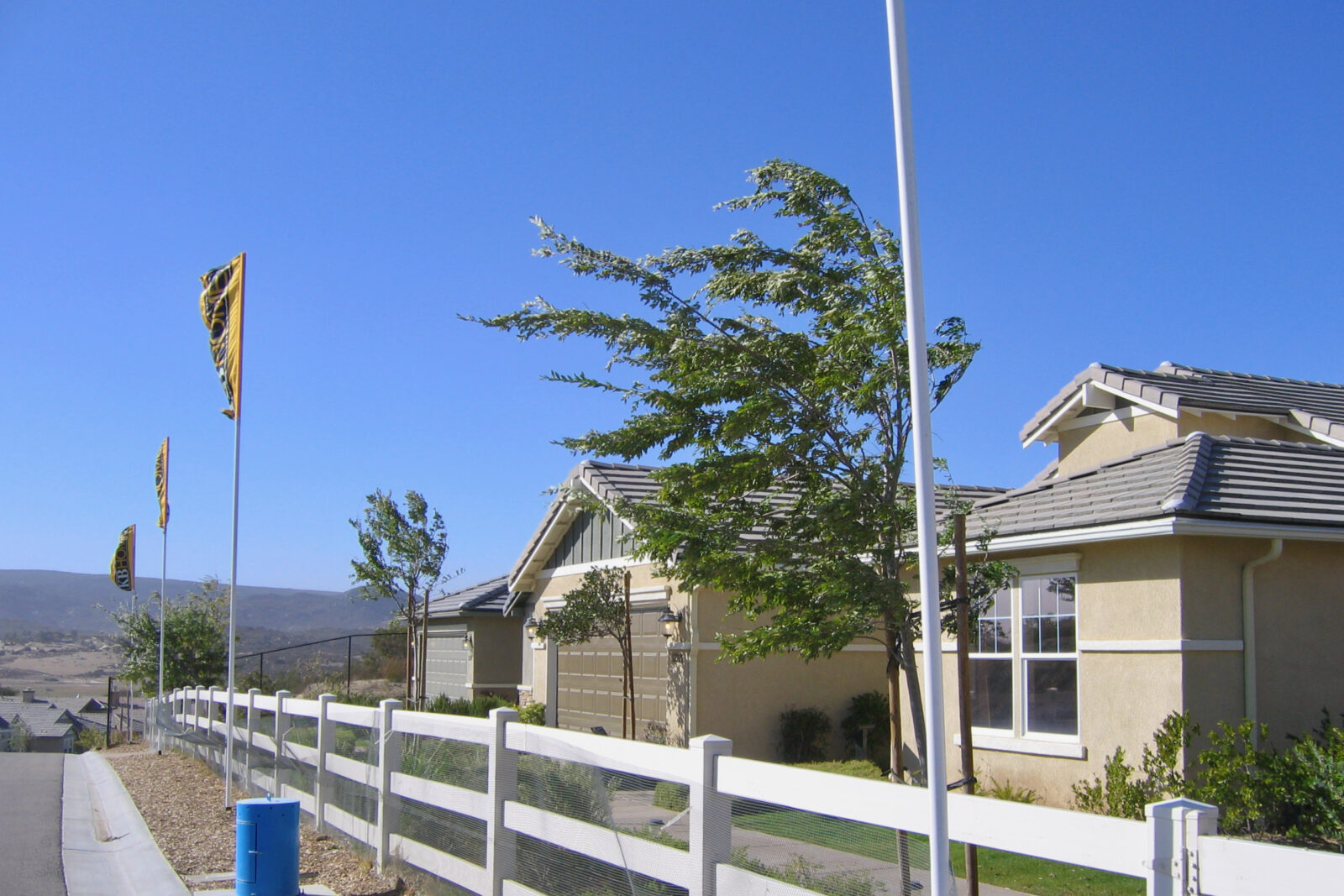By Joan Didion (1934-2021)
Originally published in the Saturday Evening Post
August 26, 1967
There is something uneasy in the Los Angeles air this afternoon, some unnatural stillness, some tension. What it means is that tonight a Santa Ana will begin to blow, a hot wind from the northeast whining down through the Cajon and San Gorgonio passes, blowing up sand storms out along Route 66, drying the hills and the nerves to flash point.
For a few days we will see smoke in the canyons and hear sirens in the night. I have neither heard nor read that a Santa Ana is due, but I know it, and almost everyone I have seen today knows it too. We know it because we feel it. The baby frets. The maid sulks. I rekindle a waning argument with the telephone company, then cut my losses and lie down, given over to whatever it is in the air. To live with the Santa Ana is to accept, consciously or unconsciously, a deeply mechanistic view of human behavior.
I recall being told, when I first moved to Los Angeles and was living on an isolated beach, that the Indians would throw themselves into the sea when the bad wind blew. I could see why. The Pacific turned ominously glossy during a Santa Ana period, and one woke in the night troubled not only by the peacocks screaming in the olive trees but by the eerie absence of surf. The heat was surreal. The sky had a yellow cast, the kind of light sometimes called “earthquake weather.” My only neighbor would not come out of her house for days, there were no lights at night, and her husband roamed the place with a machete. One day he would tell me that he had heard a trespasser, the next a rattlesnake.
Raymond Chandler wrote this famous passage about the Santa Anas in his 1938 novel Red Wind:
“There was a desert wind blowing that night. It was one of those hot, dry Santa Anas that come down through the mountain passes and curl your hair and make your nerves jump and your skin itch. On nights like that, every booze party ends in a fight. Meek little wives feel the edge of the carving knife and study their husband’s necks. Anything can happen.”
That was the kind of wind it was. I did not know then there was any basis for the effect it had on all of us, but it turns out to be another one of those cases in which science bears out folk wisdom. The Santa Ana, which is named for one of the canyons it rushes through, is a foehn wind, like the foehn of Austria and Switzerland and the hamsin of Israel. There are a number of persistent, malevolent winds, with perhaps the best known being the mistral of France and the Mediterranean sirocco, but a foehn wind has distinct characteristics: it occurs on the leeward slope of a mountain range and, although the air begins as a cold mass, it is warmed as it comes down the mountain and appears finally as a hot dry wind. Whenever and wherever foehn blows, doctors hear about headaches and nausea and allergies. About “nervousness.” About “depression.”
In Los Angeles some teachers do not attempt to conduct formal classes during a Santa Ana because children become unmanageable. In Switzerland the suicide rate goes up during the foehn, and in the courts of some Swiss cantons the wind is considered a mitigating circumstance for crime. Surgeons are said to watch the wind, because blood does not clot normally during a foehn. A few years ago an Israeli physicist discovered that not only during such winds, but for the 10 or 12 hours which precede them, the air carries an unusually high ratio of positive to negative ions. No one seems to know exactly why that should be — some talk about friction and others suggest solar disturbances. In any case the positive ions are there, and what an excess of positive ions does, in the simplest terms, is make people unhappy. One cannot get much more mechanistic than that.
Easterners commonly complain that there is no “weather” at all in Southern California, that the days and the seasons slip by relentlessly, numbingly bland. That is quite misleading. In fact, the climate is characterized by infrequent but violent extremes: two periods of torrential subtropical rains which continue for weeks and wash out the hills and send subdivisions sliding toward the sea, and about 20 scattered days a year of the Santa Ana, which, with its incendiary dryness, invariably means fire. At the first prediction of a Santa Ana, the Forest Service flies men and equipment from Northern California into the state’s southern forests, and the Los Angeles Fire Department cancels its ordinary non-firefighting routines. The Santa Ana caused Malibu to burn as it did in 1956, and Bel Air in 1961, and Santa Barbara in 1964. Twelve men were killed fighting a Santa Ana fire that spread through the San Gabriel Mountains in 1966.
Just to watch the front-page news out of Los Angeles during a Santa Ana is to get very close to what it is about the place. The longest single Santa Ana period in recent years was in 1957, and it lasted not the usual three or four days but rather 14 days, from Nov. 21st until Dec. 4th. On the first day 25,000 acres of the San Gabriel Mountains were burning, with gusts reaching 100 miles an hour. In town, the wind reached Force 12, or hurricane force, on the Beaufort Scale; oil derricks were toppled and people ordered off Downtown streets to avoid injury from flying objects. On Nov. 22nd the fire in the San Gabriels was out of control. On Nov. 24th six people were killed in automobile accidents, and by the end of the week the Los Angeles Times was keeping a box score of traffic deaths. On Nov. 26th a prominent Pasadena attorney, depressed about money, shot and killed his wife, their two sons and himself. On Nov. 27th a South Gate divorcée, twenty-two, was murdered and thrown from a moving car. On Nov. 30th the San Gabriel fire was still out of control, and the wind in town was blowing 80 miles an hour. On the first day of December four people died violently, and on the 3rd the wind began to break.
It is hard for people who have not lived in Los Angeles to realize how radically the Santa Ana figures in the local imagination. The city burning is Los Angeles’ deepest image of itself. Nathaniel West perceived that, in The Day of the Locust, and at the time of the 1965 Watts riots what struck the imagination most indelibly were the fires. For days one could drive the Harbor Freeway and see the city on fire, just as we had always known it would be in the end. Los Angeles weather is the weather of catastrophe, of apocalypse, and just as the reliably long and bitter winters of New England determine the way life is lived there, so the violence and the unpredictability of the Santa Ana affect the entire quality of life in Los Angeles, accentuate its impermanence, its unreliability.
The winds shows us how close to the edge we are.
This Joan Didion story was originally published in the Aug. 26, 1967, issue of the Saturday Evening Post, and later included as part of the ‘Los Angeles Notebook’ chapter of her 1968 book Slouching Towards Bethlehem.
Photos © 2007 Tommy Hough, all rights reserved.


